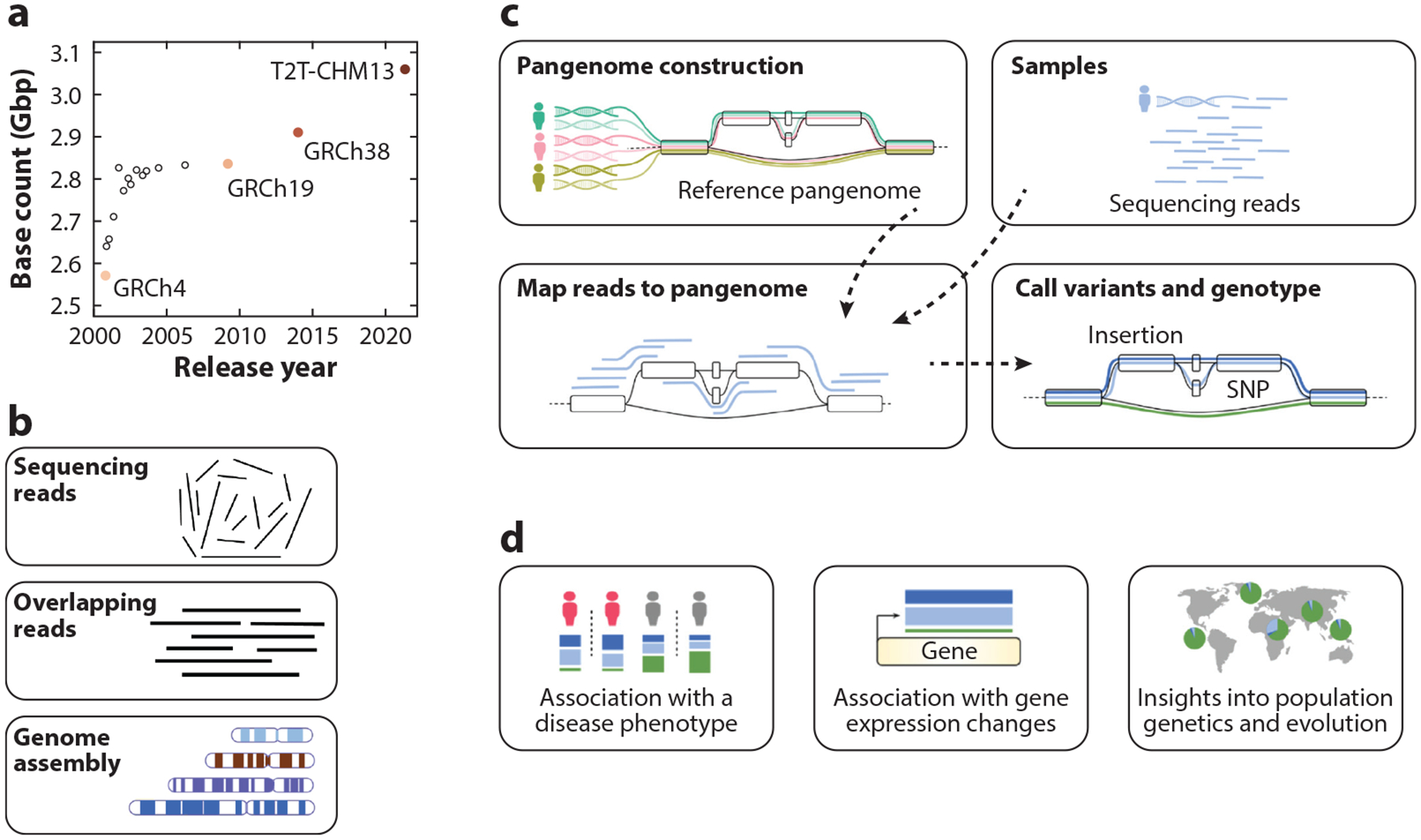Figure 1.

Overview of the process of human genome sequence assembly. (a) Sequence length improvements to the human genome reference sequence over time. (b) Overview of the genome sequence assembly process. First, individual sequencing reads are generated from a sample. Then, the sequencing reads are compared with each other to identify overlaps. Overlapping reads are then merged to generate a genome sequence. (c) Overview of pangenome reference assembly and analysis. First, the pangenome is assembled from multiple individual genome sequences, revealing commonalities and differences among them. Later, sequencing reads generated from other samples can be mapped (or aligned) to the pangenome reference to detect variants and establish genotypes. (d) Applications for human genome analysis. Abbreviations: SNP, single-nucleotide polymorphism; T2T, telomere-to-telomere. Panel a adapted from Reference 110; panels c and d adapted from Reference 133.
